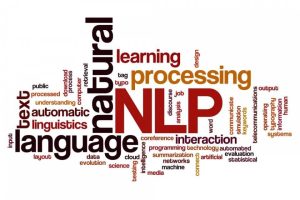Introduction:
In today’s digital age, the ability to understand and process human language is more important than ever. From virtual assistants like Siri and Alexa to language translation services and sentiment analysis tools, Natural Language Processing (NLP) plays a key role in enabling machines to understand and interact with human language. We will also examine how software is leading the way.
Understanding NLP: At its core, natural language processing is a branch of artificial intelligence that focuses on interactions between computers and human language. It covers a wide range of applications including text analysis, sentiment analysis, speech translation, speech recognition, and more. NLP algorithms enable machines to interpret and derive meaning from the unstructured data of human language, opening up many possibilities for automation, insight generation and advanced user experiences
Key components of NLP:
Tokenization: The process of dividing information into smaller units, such as words, phrases, or sentences, known as tokens.
Part of Speech (POS) Tagging: Each word in a sentence is assigned a syntactic tag, indicating its syntactic function (e.g., noun, verb, adverb).
Named Entity Recognition (NER): Identification and classification of named entities such as persons, organizations, places, dates, etc. in the text.
Parsing: Analysis of the syntactic structure of sentences to understand their syntactic relationships.
Emotional appraisal: The emotional or emotional tone expressed in a piece of writing, whether positive, negative, or neutral.
Using NLP: Chatbots and Virtual Assistants: NLP powers the conversational interfaces of chatbots and virtual assistants, enabling them to understand user questions, provide relevant feedback, and take actions.
Language translation: NLP facilitates automatic language translation, allowing users to accurately translate text from one language to another.
Text summarization: NLP algorithms can compress long documents or summaries into short texts, extracting important information.
Sentiment analytics: NLP is used to analyze social media posts, customer reviews, and other data to measure sentiment, mood, and public opinion.
Text Extraction: NLP enables you to extract structured text from the unstructured text, such as extracting data points from a resume or news release.
NLP using Jain Software: Jain Software is at the forefront of deploying innovative NLP solutions to solve a wide range of business challenges and increase operational efficiency. Using state-of-the-art algorithms and technologies, Jain Software’s NLP experts work closely with clients to develop customized solutions to suit their specific needs Here’s how Jain Software approaches NLP implementation:
Requirements Gathering: Jain Software starts by understanding the customer needs, goals, and specific use cases using NLP. Automating customer support, analyzing feedback, searching or extracting from textual data, Jain Software works closely with customers to define project objectives
Data Collection and Priority: The success of NLP projects depends on the quality and quantity of training data. Jain software collects relevant textual data sources and performs preprocessing tasks such as cleaning, tokenization and normalization to ensure data quality and integrity
Model selection and training: Jain Software’s team of NLP experts selects the most appropriate NLP models and algorithms based on the project needs. Whether it is pre-trained models like BERT or custom models, Jain Software uses its expertise to train and optimize models for maximum performance
Integration and Implementation: Once the NLP model is trained and tested, Jain Software seamlessly integrates it into the client’s existing systems or applications. Whether it’s implementing chatbots, sentiment analysis tools, or language translation services, Jain Software ensures seamless integration and provides ongoing support.
Research and iteration: Jain Software believes in continuous improvement and iteration. Once deployed, Jain Software monitors the performance of the NLP model, collects data, and iterates solutions to further enhance accuracy, efficiency and user experience.
Case Study: Enhancing Customer Support through NLP
A client of Jain Software, a leading e-commerce system, was facing challenges in handling customer support inquiries properly. Due to the volume of incoming client emails, the client tried to prioritize and respond to questions quickly. Jain Software provided NLP-based solutions to automate and simplify the customer support process.
Using NLP techniques such as text segmentation and named entity recognition, Jain Software has developed custom chatbots that can intercept incoming customer emails, segment them based on urgency and subject matter, provide appropriate responses or refer them to support team a next to the appropriate
The results were amazing. The NLP-powered chatbot dramatically reduced response times, improved customer satisfaction and freed up support staff to focus on complex questions Customers saw significant increases in efficiency and productivity, resulting in cost savings so increased customer loyalty.
Conclusion:
Natural language processing is changing the way businesses interact with textual data, enhancing automation, insight generation and user experience With expertise in NLP applications, Jain Software caters to multi-dimensional enterprises internal capabilities to harness the power of NLP and open up new opportunities for growth and innovation. Whether developing chatbots, sentiment analysis tools, or language translation services, Jain Software is committed to delivering sophisticated NLP solutions that deliver tangible business results.
As organizations continue to embrace digital transformation, NLP is playing a critical role in unlocking the value stored in textual data. As a Jain Software partner, you can embark on a transformative journey to harness the power of NLP and create the future of artificial intelligence.

